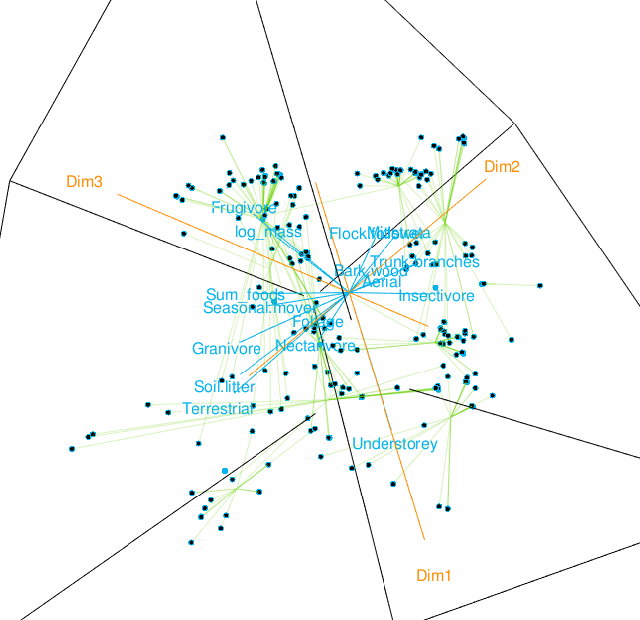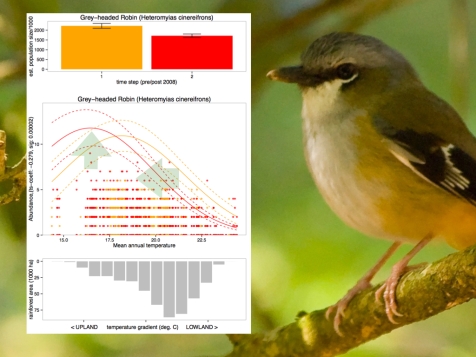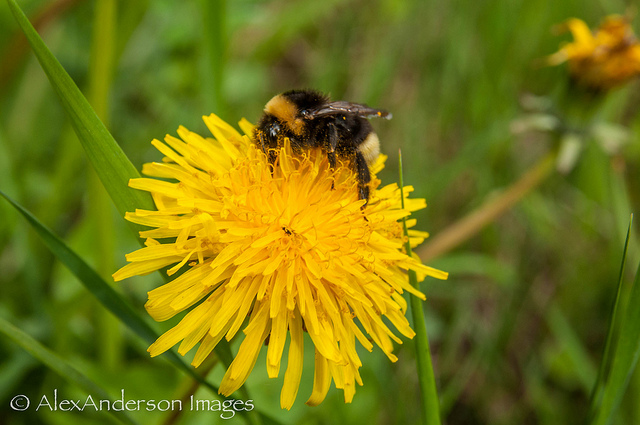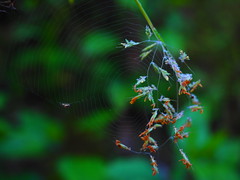 An animated rotation of a plot of cloud forest bird species in their multidimensional trait space, showing vectors of trait variables, and spiders linking groups defined from a separate clustering analysis.
An animated rotation of a plot of cloud forest bird species in their multidimensional trait space, showing vectors of trait variables, and spiders linking groups defined from a separate clustering analysis.
A small success in R yesterday, I finally managed to generate a 3d movie of the arrangement of species in the multidimensional trait space I am currently working with, for cloud forest birds in the Colombian Andes. The output above uses the “rgl” and “vegan” packages to produce a series of .png files that animate the plot rotation, and for the conversion to video requires “imagemagick” to be installed (which in turn requires Xcode and macports to get it all happening). I found great help for getting my initial code just for 3d plots to work on stack overflow.
It is not executable, but below is what my code looks like. Continue reading



































